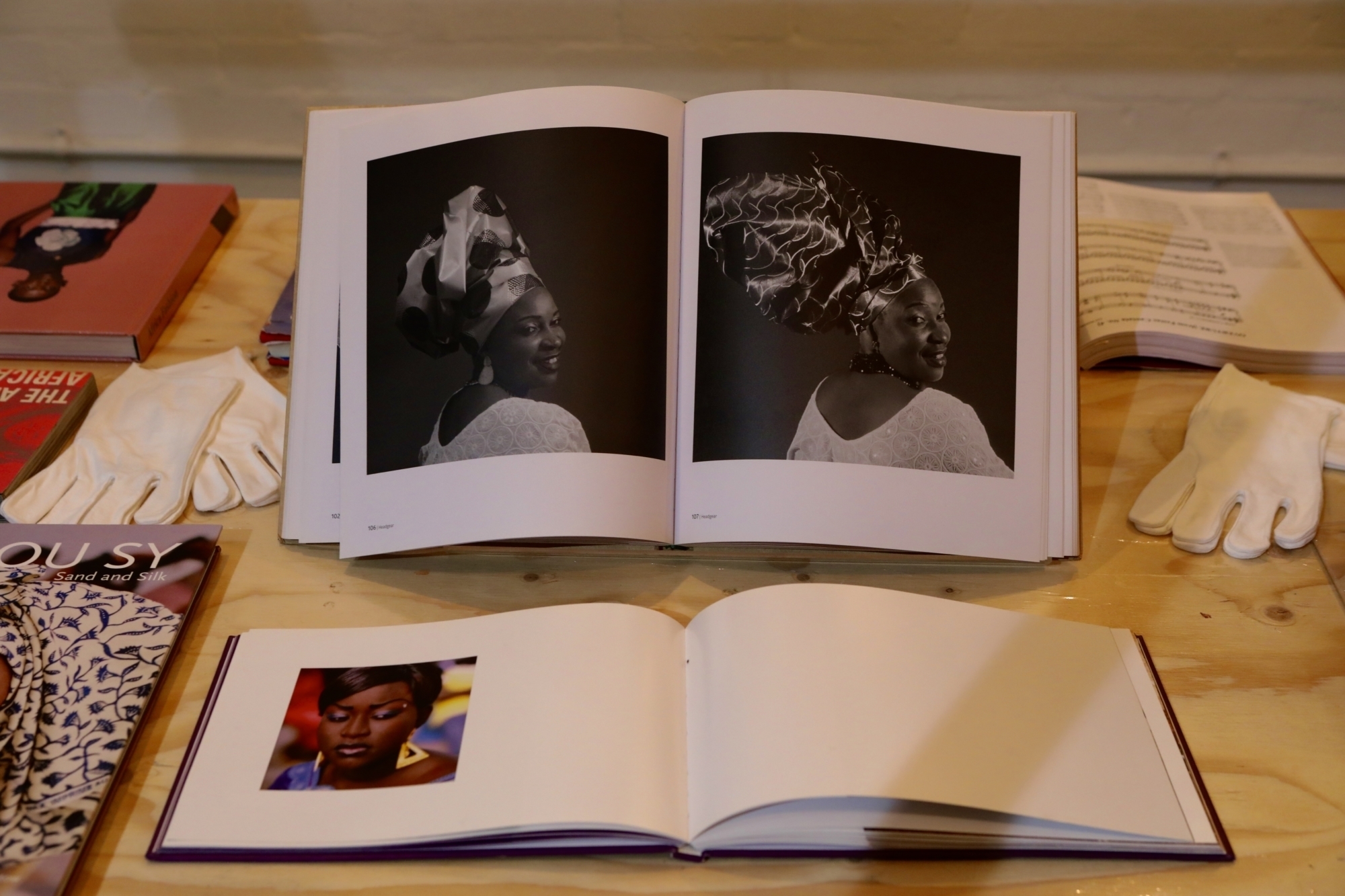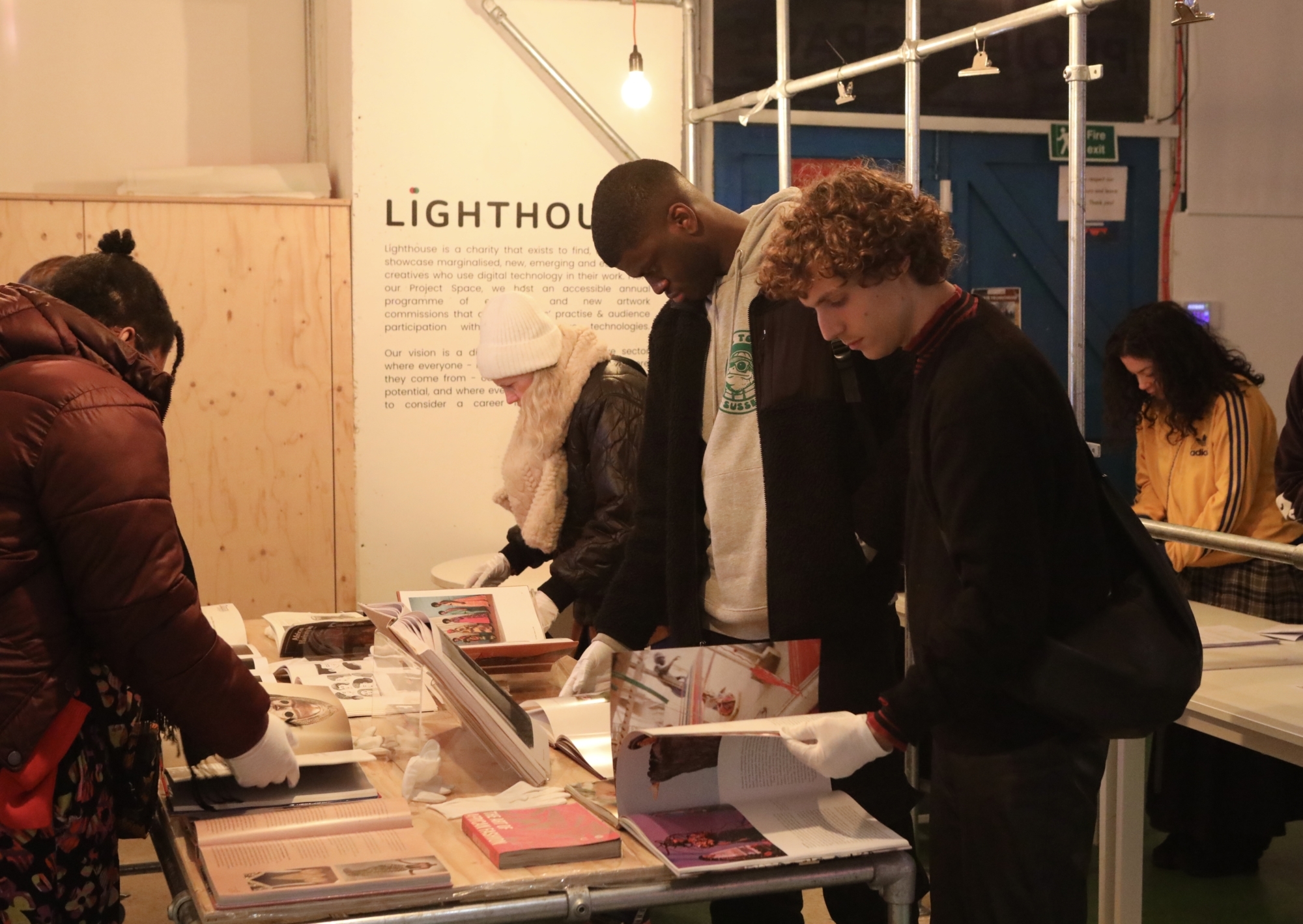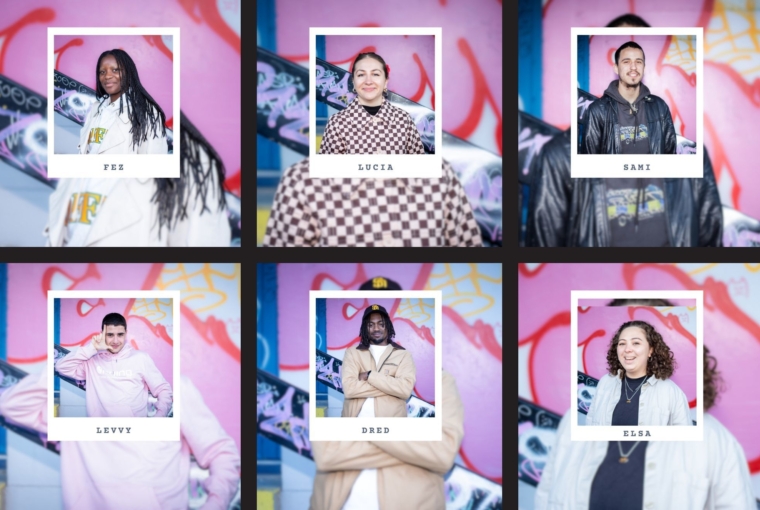
African Style Archive Reflection + Q&A
Words by our Future Creative Leader, Fez Sibanda

In February 2025, Lighthouse welcomed Tosin Adeosun, a British-Nigerian curator, researcher, and fashion historian, for a dedicated artist residency focused on expanding the African Style Archive—a growing digital resource documenting African sartorial history. Tosin is the founder of the African Style Archive, which she launched via Instagram in 2020 to explore the relationship between African fashion history, photography, and sartorial practices. She holds a BA in Media and Communication and an MA in Art History and Museum Curating with Photography from the University of Sussex. African Style Archive, under Tosin's direction, has partnered with major brands and institutions like Byredo, International Curators Forum, Ahluwalia, Modern Art Oxford, and Google Arts & Culture, showcasing her expertise.
Over the course of the residency, Tosin worked alongside research assistant Roisin Atkins-Dykes, a graduate of University College London (UCL) in Anthropology. Roisin has worked as a Project Assistant Intern with Kinetika Bloco, completed a short film production and editing residency with Four Corners Galleries, and is currently engaged in oral history interviewing with MayDay Rooms as well as an archivist placement with Tower Hamlets Library and Archives.
The residency, programmed by Lighthouse’s Future Creative Leaders and facilitated by Doctoral Researcher Fez Sibanda, provided Tosin with time, space, and expertise to refine her archival practice. Across the week, she deepened her research into African fashion narratives, sourced and digitised new materials, and developed strategies for the long-term structure of the African Style Archive’s digital platform.
The residency culminated in a public Open Session on 21 February at Lighthouse’s Project Space, where Tosin shared insights from her research, discussed the evolving role of digital archives, and engaged in a live Q&A with audiences. The discussion explored the significance of African fashion history, the challenges of archiving Black cultural histories, and the importance of accessibility in digital archives.
With quotes from that Q&A interview and questions posed by both Fez and a live audience, this blog post captures the key ideas from Tosin’s residency—her approach to research, the role of digital archiving in African fashion history, and the impact of her time at Lighthouse—while reflecting on the broader significance of preserving and amplifying these narratives.
FOREWORD FROM FEZILE SIBANDA
Archives are never neutral. They shape our understanding of history, dictating what is remembered, preserved, and passed down. Traditionally, the archive has been a site of exclusion—especially when it comes to African fashion history, which has often been overlooked or framed through a Eurocentric lens. This is what makes Tosin Adeosun’s African Style Archive (ASA) so urgent and necessary. It is not just a collection of images; it is an intervention—a challenge to the dominant narratives that have historically dictated what is considered valuable or worthy of preservation.
The images Tosin gathers often reflect histories shaped by colonialism and globalisation, with many archival photographs capturing middle-class Africans in Western-influenced styles. Some might argue that this reinforces a Western-centric gaze, but without these materials, we cannot critically examine, discuss, or reclaim them. The archive creates space for both celebration and critique, allowing African fashion history to be studied on its own terms rather than through the framework of European aesthetics and art history.
Tosin’s research process is meticulous. She spends hours researching in physical and digital archives, digging through rare books, forgotten magazines, and eBay listings to unearth materials that have been scattered, discarded, or hidden in the depths of digital marketplaces and bookstores. Along the way, she encounters the brutal language of colonial-era cataloguing, where Black people and African cultures are frequently described in dehumanising terms. This is a painful but necessary part of the process—one that reveals how historical archives were often built on extraction and exploitation, reinforcing a deficit lens that treated African fashion and aesthetics as derivative, ornamental, or secondary.
This makes digital accessibility a crucial aspect of ASA’s mission. Tosin envisions the archive as a hybrid space—both digital and physical—ensuring accessibility across different regions and communities. But accessibility is not just about putting something online. As she pointed out in our discussions, internet inequalities across the African continent and beyond mean that digital archives must be designed with limited data usage, offline access, and alternative formats in mind.
Her residency at Lighthouse provided her with the opportunity to develop the tools needed to expand the platform, including the acquisition of a scanner for digitising rare materials and consultations with industry experts on business strategy and platform development.
The culmination of the residency was a public showcase at Lighthouse, where Tosin shared her work, exhibited rare archival books and magazines from her collection of over 8 years, and engaged in a Q&A discussion that explored the complexities of archiving African fashion history. The conversation ranged from funding challenges to the politics of preservation, with a strong emphasis on the role of personal and community-led archives in shaping cultural history.
What follows is a selection of insights from that conversation—a deeper dive into Tosin’s practice, her research methods, and her vision for the African Style Archive.
Q&A WITH TOSIN ADEOSUN, AFRICAN STYLE ARCHIVE
Why is it important to have an accessible digital resource for African fashion history?
TA: “I think it's about positioning it in the canon, in an accessible way, where African fashion history should be part of the norm—not something that is very rare, that people don’t hear of or speak about. The African Style Archive came about after I finished my Master’s in Art History and Museum Curating with Photography at the University of Sussex. I wanted to do a fashion history degree where I would learn about African fashion history extensively, but I couldn’t find one. That’s when I realised—more people should know about this.”
How do you see the digitising of the African Style Archive shaping future research or education?
TA: “I wanted to create something digital because it has a reach where anyone in any part of the world can find out about it and engage with it. So I think the reach is really important, but it's also nice to have tangible aspects of the archive as well. I think bridging the digital and the physical is important.”
What is your process for sourcing and selecting items for the archive?
TA: “Many eBay tabs! I go down a rabbit hole—I end up finding something sometimes, then before I know it, I’ve found other things and actually forgotten what I was originally looking for. But I think sourcing, for me, starts with a moment I’m interested in, and then I build from there. You have to be a bit creative.”
“What I found with sourcing, and researching and referencing in general is that, especially when it comes to topics about Africa or Blackness, you sometimes have to use keywords or search words that are now outdated or not politically correct. But it’s still part of the whole learning process. I hope to be part of changing the narrative and the keywords, through searching, sourcing, and learning as I develop my own archive.”
“The process is convoluted, but it’s great. I was looking at hairstyles and references on African hairstyles, and I ended up finding a book called Kinyozi, which is now part of the archive. It was an exhibition catalogue from 1994 at Brighton Museum, tied to an exhibition on the art of African hairstyles. I never would have thought that such an exhibition had happened here in Brighton. Then I just started going down a rabbit hole—how did this exhibition happen? I was so curious. That’s what sourcing is like—you never know what you might find.”
How has working with your research assistant, Roisin Atkins-Dykes, and platforms like Lighthouse influenced the direction of the African Style Archive?
TA: “I mean, I've been doing this alongside a full-time job and other freelance work. So I'm always doing a billion things at the same time, but having this full week to have support and also dream big has been amazing and helpful. To see that there are other people equally excited about the project and happy to support it has just been really amazing and a great boost. There's so much more work to be done, and the possibilities are limitless.”
For those interested in exploring the archive, supporting its growth, or getting involved in future projects, follow and connect with Tosin here:
📷 Instagram:@africanstylearchive
🌍 Website: tosinadeosun.com
Listen to the full Q&A below.
Read each of our Future Creative Leaders' personal reflections on an aspect of the programme in the digital booklet below.
About
Tosin Adeosun (she/her) is a London-based researcher, curator, and consultant specialising in the culture, art, and fashion history of the African diaspora. She is the founder of African Style Archive, dedicated to preserving, documenting, and celebrating African fashion history and its global influence. She collaborates with archives, communities, brands, and institutions to curate compelling stories. Tosin has worked with institutions like Google Arts & Culture, Byredo, Guest Artist Space Lagos, London College of Fashion, and Modern Art Oxford, unearthing compelling narratives.
www.tosinadeosun.com | @africanstylearchive @motown_gal
Roisin Atkins-Dykes (she/her) is Research Assistant for Africa Style Archive (ASA). She is a Graduate student of Anthropology from University College London, and now working as Project Assistant Intern with Kinetika Bloco. Roisin is currently exploring mediums of archival research, and most recently completed a short film production and editing with Four Corners Galleries. She is currently working on a project as an oral histories interviewer with MayDay Rooms and completing an archivist placement with Tower Hamlets Library and Archives.
roisinsreflections.wordpress.com | @roisinzad_
Fez Sibanda (she/her) is a Doctoral researcher at the University of Sussex with a passion for exploring how marginalised groups experience education. Her research dives into topics like race, coloniality, and higher education. When she’s not researching, she’s busy being a Lighthouse Future Creative Leader, where she’s hosted events and led panel discussions that spark important conversations. Fez is all about challenging systems, amplifying underrepresented voices, and creating spaces for powerful dialogue.
Content information:
Listen to the Q&A between Tosin Adeosun, Fez and the audience.
Transcript coming soon - watch this space.
Future Creative Leaders (FCL) is a 12-month paid programme offering young creatives from underrepresented backgrounds the opportunity to work closely with Lighthouse's leadership team to explore various aspects of creative leadership. Funded and supported by Art Fund’s ‘Reimagine Grants’ and Chalk Cliff Trust, over the year, participants will co-curate programmes, select participants for mini-residencies, and recruit their successors, all while exploring alternative governance structures, accountability, and power-sharing.



